Cooking Summer Peaches at Casa Navarro
With temperatures still in the 90s, it feels like summer is far from over in San Antonio. This week’s post features guest blogger Emiliano Calderon, Site Educator at Casa Navarro State Historic Site, located in downtown San Antonio as he cooks with summer’s favorite fruit, peaches.
by Emiliano Calderon
The peach tree at Casa Navarro State Historic Site produced a wonderful and tasty abundance of fruit that was enjoyed by site visitors, neighbors and wildlife in downtown San Antonio. By the end of June, most of the fruit was gone but we saved a few dozen peaches to try a recipe from the UTSA Libraries Mexican Cookbook Collection.
We found a recipe for Salsa de Ciruelas (plum sauce) in a book titled Recetas Practicas para La Señora de Casa, published in 1890. We adapted the recipe using peaches since they are also a stone fruit, and were more commonly grown in South Texas. The recipe (below) was vague, but once translated from Spanish to English was simple to make.
“Las ciruelas se ponen con agua en la lumbre, y una raja de canela, á que den unos hervores, y se puedan deshacer y deshuesar en la misma agua con una cuchara. Despues se les pone … azúcar.”[1]
The recipe calls for the fruit to be boiled over a fire with water and a cinnamon stick. Once the fruit is soft enough, it can be pitted and broken up with a spoon. Finally, add sugar and serve. In our experiment, we boiled the peaches, cinnamon and water in a cast iron pot for approximately 45 minutes over an open fire. We removed the seeds with a spoon once the fruit became soft enough and placed the peaches back over the fire to simmer longer, approximately 30 minutes. This made the peaches into a sauce similar to that found in peach cobblers. We then put the peach sauce into a clay pot and added sugar.
The sauce had a bittersweet taste due to the combination of the freshly picked peaches and sugar, but tasted great when used as you would a jam or jelly. Should you be interested in reproducing the recipe at home, we recommend waiting until your fruit is very ripe as it will be sweeter when boiled down.
Casa Navarro State Historic Site is located at 228 South Laredo Street in downtown San Antonio, along the Texas Independence and Hill Country Trail Regions.
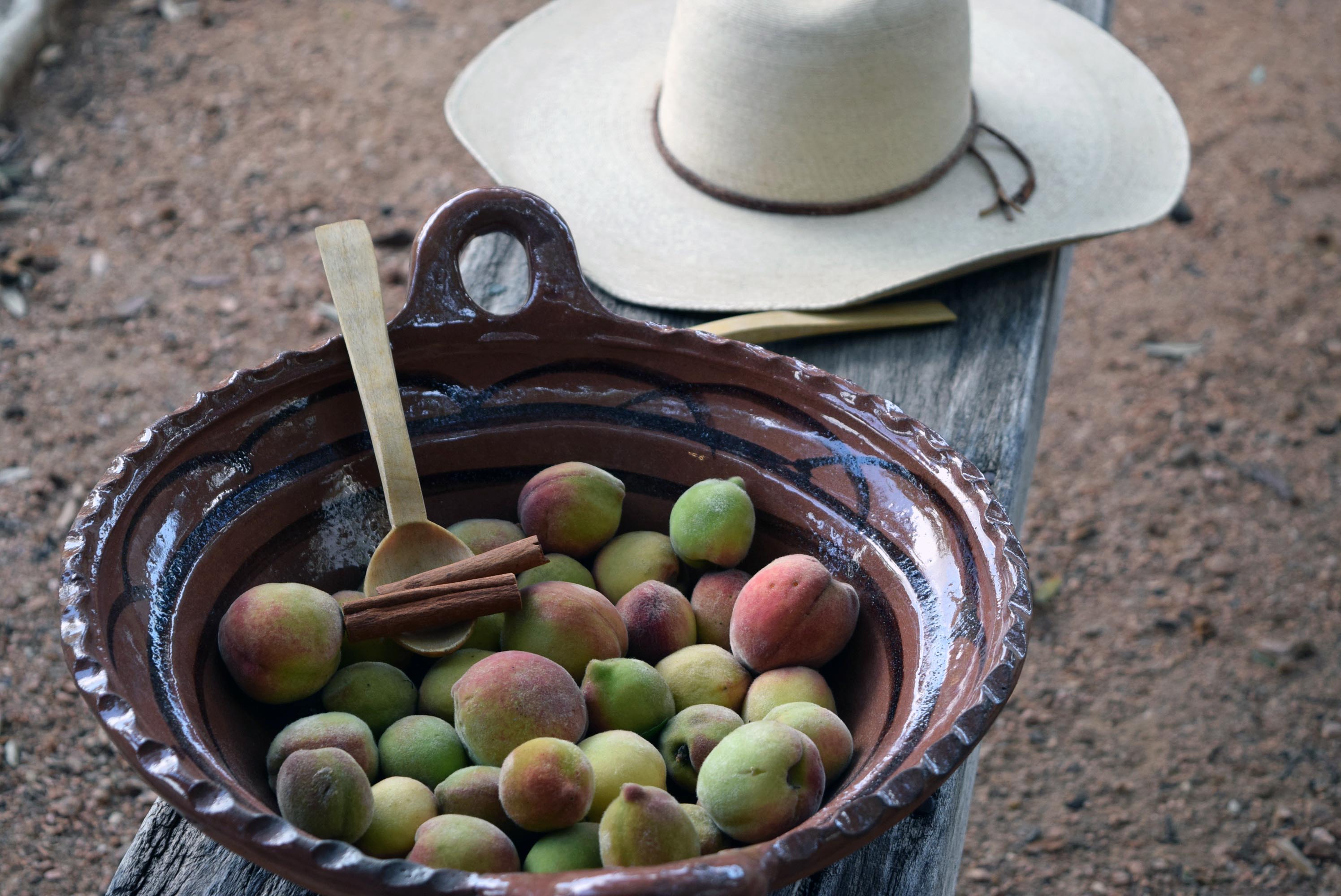
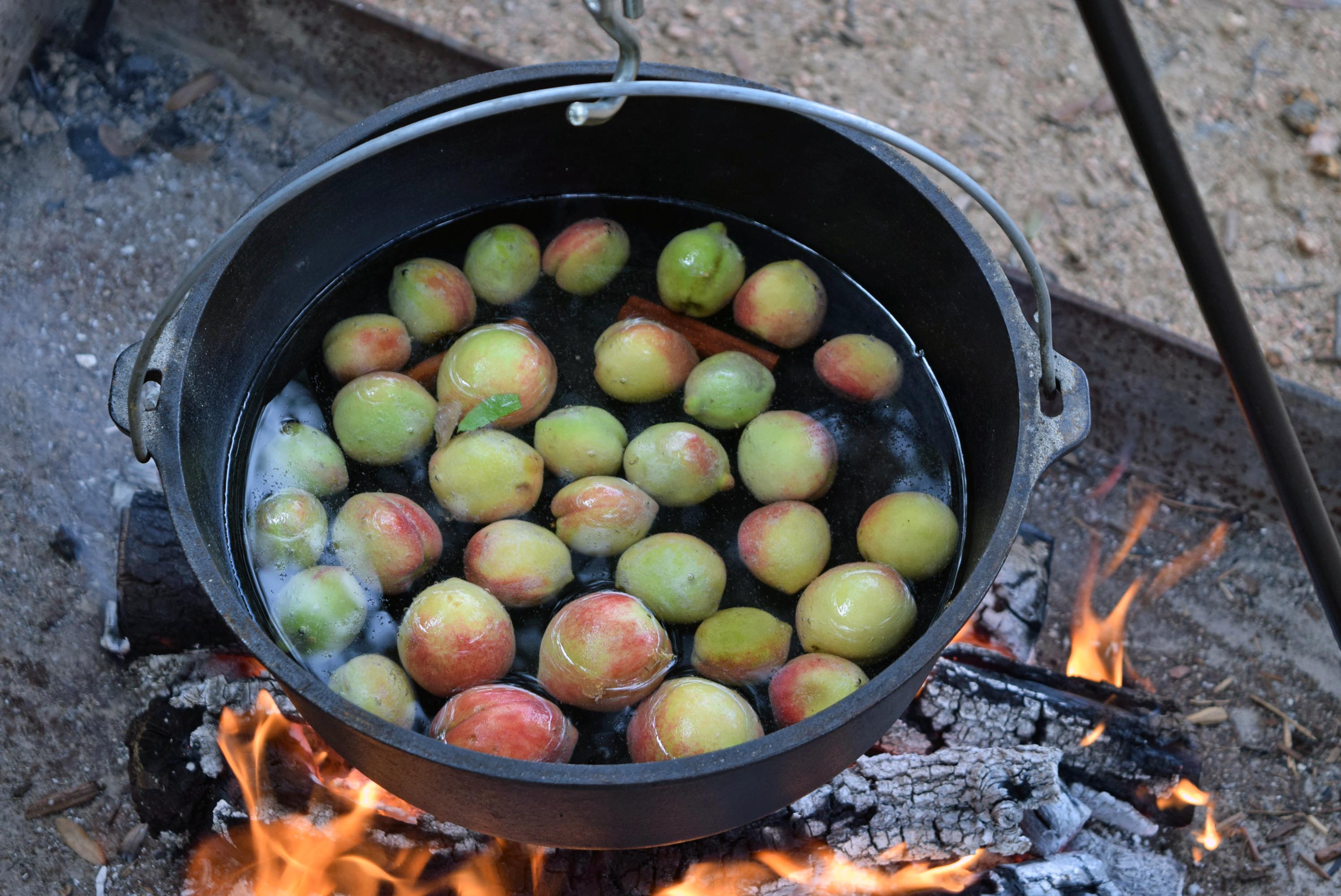
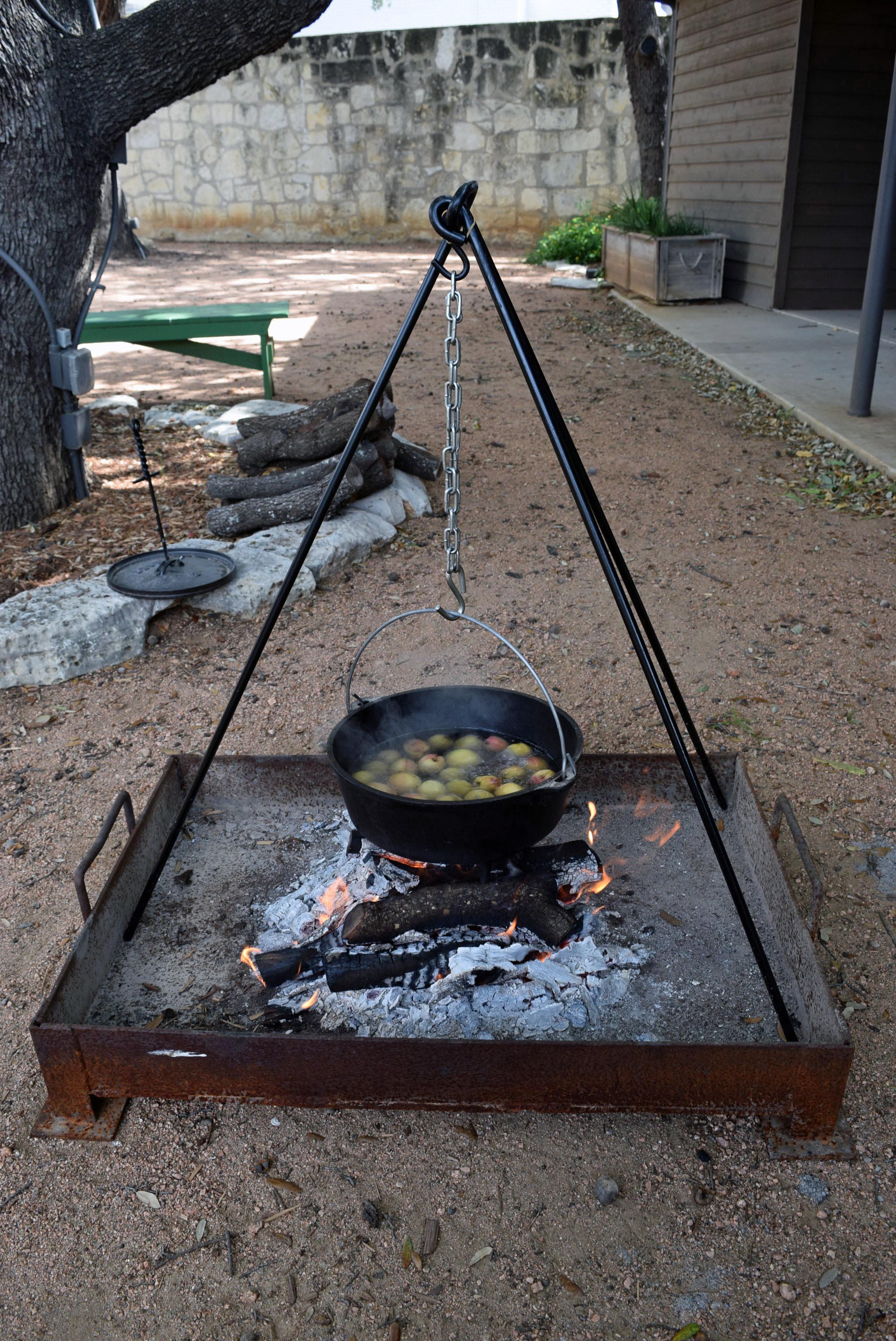
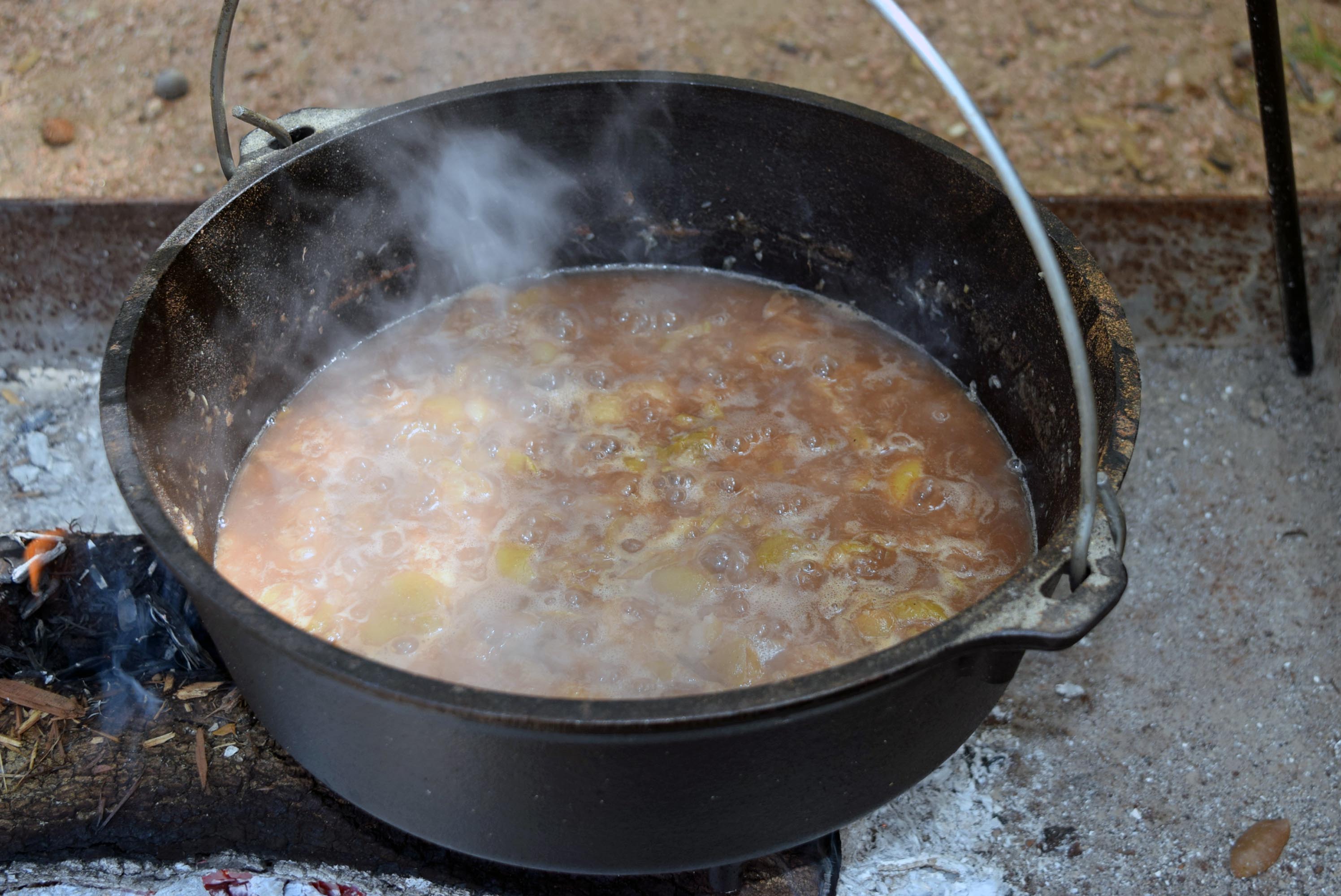
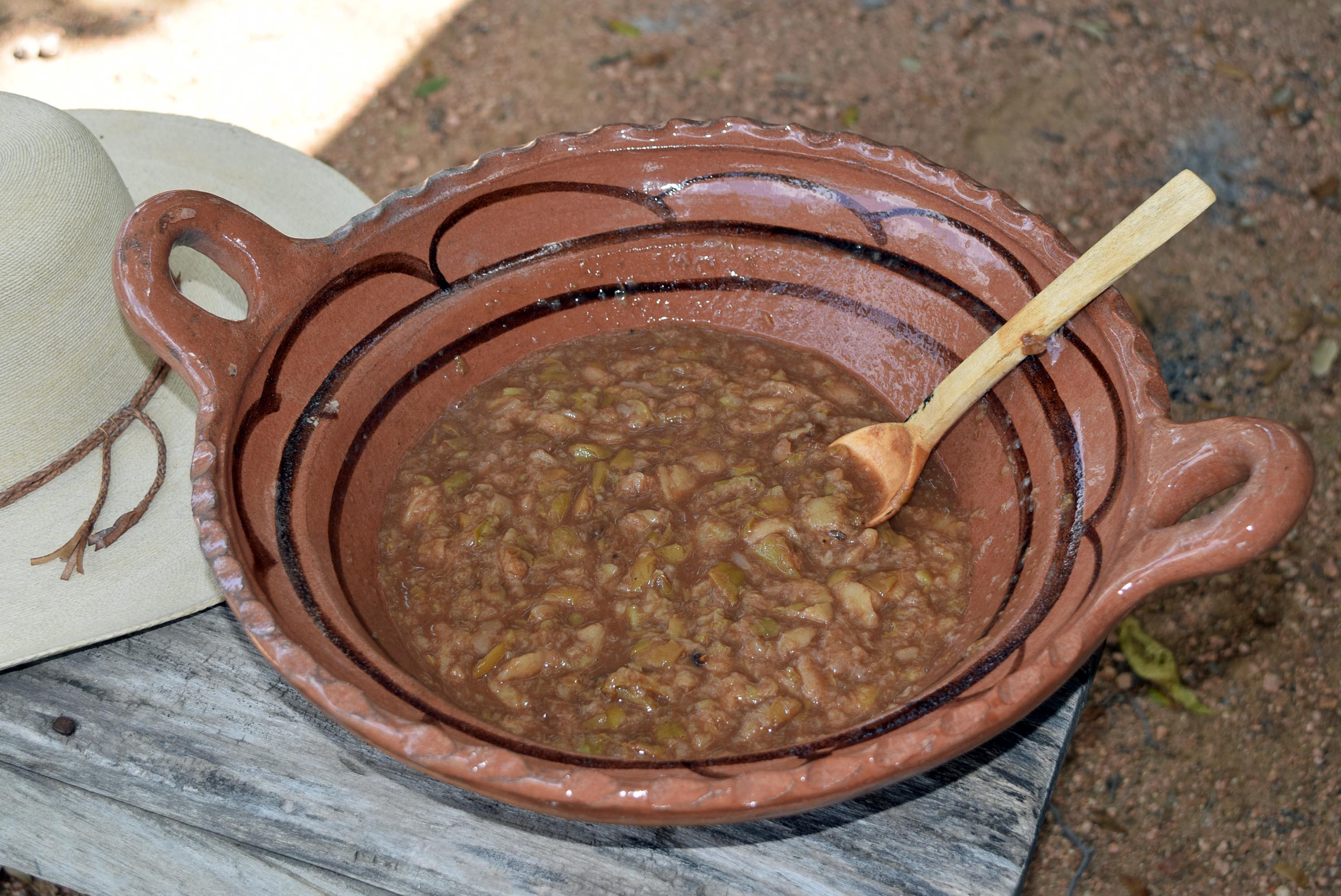
[1] 1890. Recetas practicas para la señora de casa: Sobre cocina, reposteria, pasteles, neveria, etc., etc. Guadalajara: Tip. de M. Pérez Lete. UTSA Libraries Special Collections.

Nice and practical adaptation.
Was the book published in Mexico or in the US? I ask because in Mexican Spanish ciruela refers to fruits of trees in the genus Spondias. Dictionary definitions of ciruela use the Castillano definition, fruits of trees in the genus Prunus. Spondias fruits and Prunus fruits have very different flavors. It should be no surprise that Mexican Spanish isn’t Castillano.
It isn’t safe to use standard dictionary definitions when translating Mexican recipes into English. Always check the Diccionario Enciclopedico de Gastronomia Mexicana. I believe that UTSA Special Collections has copies of the first and second editions.